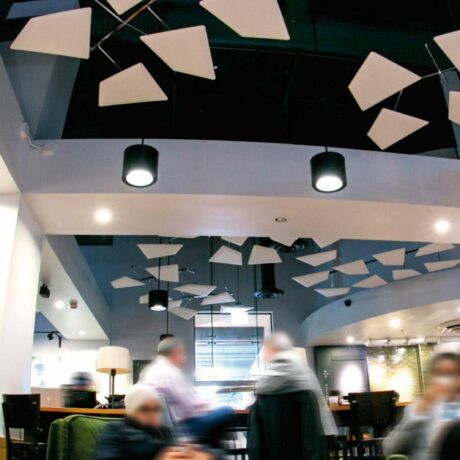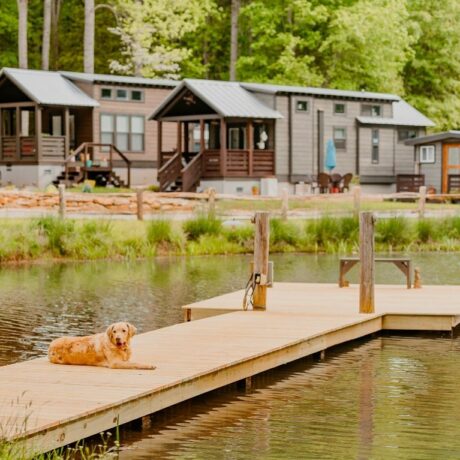
Bio
Bryan Soukup is the Vice President of Government and Public Affairs for the American Society of Interior Designers (ASID). He leads the Society’s strategic efforts to advocate for the interior design profession from a legislative, regulatory, and policy perspective before the federal and state governments, and he is the Society’s sole registered federal lobbyist and chief advocate at the state and local levels. Prior to joining ASID, he served as Director of Resilience Initiatives and as a registered federal and state lobbyist for the International Code Council (ICC), the nation’s foremost model construction codes and standards developer, where he was responsible for government advocacy, outreach, and policy concerning resilience and disaster mitigation. He served as the International Code Council’s chief ambassador to national and international resilience and sustainability projects, including two years as the founding-Executive Director of ICC’s resilience-based subsidiary, the Alliance for National & Community Resilience (ANCR). He is a licensed attorney in the District of Columbia and in the Commonwealth of Virginia, where he resides.
THE ADA AT 30
AN INTERVIEW WITH BRYAN SOUKUP
July 2020 marked the 30th anniversary of the Americans with Disabilities Act. Far more than a law to end behavioral dis- crimination in practices like hiring, the ADA has fundamentally changed many of the building and design standards and spaces that surround us. So it shouldn’t come as a surprise that a key player in the ADA’s creation and continuation is the American Society of Interior Designers (ASID). ASID supports the design industry through resources, research, and advocacy, seeking to showcase the power that design has to impact lives. sat down with ASID Vice President for Government and Public Affairs Bryan Soukup to discuss the Society’s history with ADA advocacy, the importance of design considerations in public policy, and what’s on the horizon for disability-focused design.

the network: At its core, what is the ADA?
Soukup: The ADA is a civil rights law that prohibits discrimination against individuals with disabilities in all areas of public life, including jobs, schools, transportation, and all public and private places that are open to the general public. The purpose of the law is to make sure that people with disabilities have the same rights and opportunities as everyone else. The ADA is divided into five titles (or sections) that relate to different areas of public life.
Although it was passed 30 years ago, the ADA continues to evolve. In 2008, the Americans with Disabilities Act Amendments Act (ADAAA) was signed into law. It became effective on January 1, 2009, and made a number of significant changes to the definition of ‘disability’.

In 2010, the ADA was updated to include specific building design requirements to make public buildings – like movie theaters, libraries, restaurants, hotels, medical facilities, and health clubs – accessible to people with disabilities.

the network: How has the ASID been involved with the ADA, from its development to current state?
Soukup: Advocating on behalf of designers and helping policy makers understand the impact design has on lives through every space surrounding us has been a key mission of ASID. William L. Wilkoff, FASID, was a crucial advocate of the ADA throughout its creation and was influential on much of the Act’s final language. More recently, Shelley Seigel, FASID sits on the U.S. Access Board. He was appointed by President Barack Obama in 2016.
Design and accessibility go hand in hand: designers are the ones behind the scenes having an effect on the life, health, safety, and welfare of all members of the general public, and ASID understands the responsibility designers have to ensure fair accessibility for people of all abilities. Design can be the ultimate equalizer, and the ADA is a great example of that.
the network: What are some of the key ADA considerations interior designers take? Soukup: In both commercial and residential settings, designers strive to shape a world which those of every ability level can experience con- currently. They are an integral part in making sure spaces adhere to federal and state accessibility regulations. In practice, interior designers are always looking ahead to how the end user will interact with a space, so they look at every detail to guarantee that a space is comfortable, functional, and accessible. Interior designers are incredible problem solvers, as well empathizers. At their best, they approach ADA design with both of these qualities in mind so that it doesn’t feel tacked on as an after- thought, but rather, carefully considered from square one.
Elevator controls, door hardware, countertop heights, restroom fixtures, and doorway clearances are everyday elements many of us take for granted for which designers ensure compliance in public spaces. In a bigger picture, interior designers can create key safety features like accessible wayfinding and emergency egress pathways to safeguard disabled people in times of distress or natural disaster.
Components like these show how the profession’s work goes above and beyond mere aesthetics, to public health and safety to impact lives. These elements also showcase why our advocacy work is so important: if interior designers have a seat at the table in these discussions, we can inform and educate decision makers on how to create spaces to benefit all populations. On the other side of the coin, we at ASID are always staying up to date on the latest codes and regulations to inform our designers and help them understand what considerations they need to take for occupant health and safety.
the network: The ADA has been around for 30 years now. What’s next?
Soukup: Much of the ADA currently is focused on physical disabilities, as it was originally crafted with those in mind. Neurodiversity must now enter the equation and be taken under consideration by builders and designers so we can create healthy spaces for people with neurological differences, too.
Additionally, ADA has been relatively confined to commercial, public spaces. I think we will see a shift to ADA considerations in residential environments too, as many families think more about universal design and aging in place. ASID has played a central role in drafting and supporting federal legislation mandating that any single-family home that receives federal funding must be built to ADA standards, and I believe that more creativity and innovation on incorporating these standards into homes will continue to emerge and contribute to a more accessible environment. n




